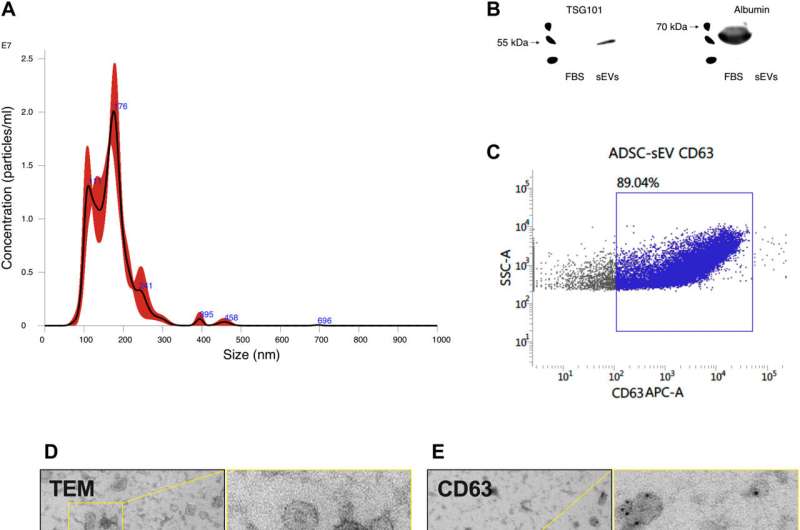October 20, 2022 report
Injecting extracellular vesicles from young mice into older mice found to reduce some signs of aging

A team of researchers at the University of Valencia, working with colleagues from the Epigenetic Clock Development Foundation, the Spanish National Cancer Centre and the David Geffen School of Medicine, has found that injecting older mice with extracellular vesicles (EVs) from young mice reduced some signs of aging. Their paper is published in the journal Science Advances.
Scientists have been looking for ways to extend the human lifespan for hundreds of years. And while some progress has been made (mostly by improving diet and health care), little has been achieved in making true advancements. In this new effort, the researchers looked into the possibility of using EVs as a way to reduce age-related declines.
EVs, which are also known as exosomes, are structures produced in eukaryotic cells that are involved in signaling between cells and also used for transporting mRNA. Suspecting that aspects of the aging process might be related to degeneration in communication between cells, the researchers wondered what would happen if they injected older mice with EVs. To find out, they extracted stem cells from fatty tissue in young test mice. Next, they collected EVs that were produced by the cells they had collected. They then injected the EVs into the tails of older mice—once at the outset of the test and again a week later.
The researchers then began studying the mice to see what impact the injections might have. They found that after just two weeks, the mice showed improvements in physical strength, suggesting reductions in age-related muscle degeneration. They also found the mice tired less easily and tended to be better coordinated—and their fur grew back more quickly. The team noted that the improvements peaked at approximately 30 days after the initial injection and disappeared after approximately 60 days.
The researchers also dissected some of the test mice and found reductions in degeneration of kidney tissue and an increase in cell production. They also found reductions in inflammatory biomarkers and that some tissue appeared to be epigenetically younger.
More information: Jorge Sanz-Ros et al, Small extracellular vesicles from young adipose-derived stem cells prevent frailty, improve health span, and decrease epigenetic age in old mice, Science Advances (2022). DOI: 10.1126/sciadv.abq2226
© 2022 Science X Network




















